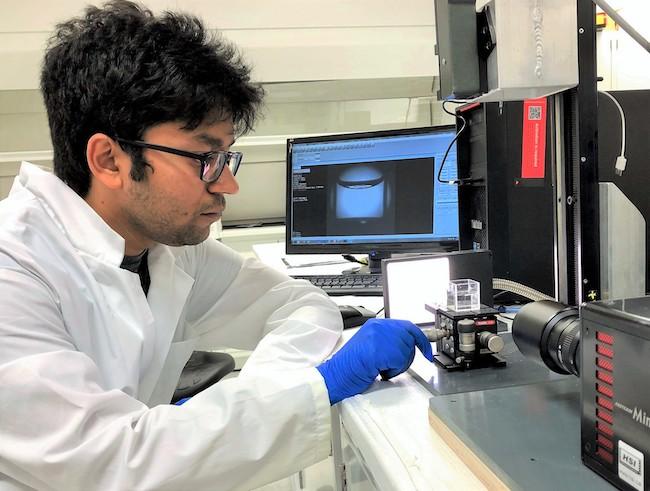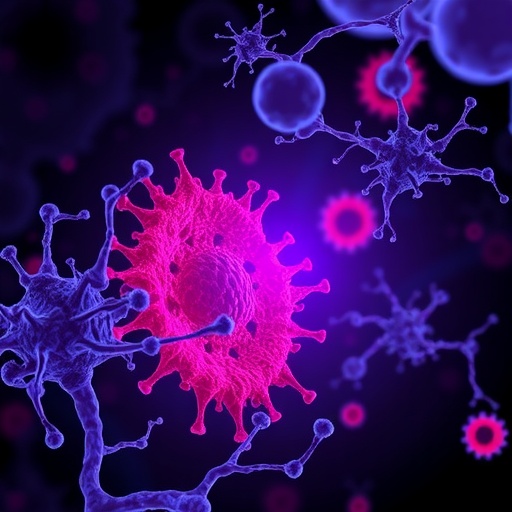
Credit: BRIAN CALDWELL
Researchers have developed a faster, cheaper way to coat liquid medication, an invention that could improve how drugs are delivered in the body.
The new encapsulation technology, developed by engineers at the University of Waterloo, uses gravity and other natural forces to wrap drops as they fall through a thin layer of liquid shell floating on a base liquid.
Once hardened, or cured, by exposure to ultraviolet light, the shell houses and protects the liquid core inside.
“It is a very simple technique that requires almost no energy – and it is extremely rapid,” said Sushanta Mitra, executive director of the Waterloo Institute for Nanotechnology. “Encapsulation takes place in milliseconds.”
When the liquid core is required – after reaching a particular area of the body for targeted drug delivery, for instance – the shell is designed to dissolve and release its contents.
Mitra said the system’s simplicity enables much more economical production of capsules than current methods, which include machines that wrap drops with thin gel sheets and complex microfluidic processes.
“We envision a very simple, rapid, mass-production system using syringes,” said Mitra, a professor of mechanical and mechatronics engineering who is cross-appointed in chemical engineering and physics and astronomy. “With a one-shot approach, you could produce thousands of these encapsulations.”
Other advantages of the technology include the ability to coat drops with multiple layers, greater flexibility in terms of drop volume and shell materials, and the production of stronger, more stable capsules.
In addition to the targeted delivery of pharmaceuticals and vitamins, potential uses for the liquid-liquid wrapping method include the production of tiny capsules to add flavours to cola drinks as they’re being consumed and prolonging the shelf life of cosmetic creams containing collagen.
Mitra supervised the research involving engineering graduate students Sirshendu Misra and Kumari Trinavee, and postdoctoral fellow Naga Siva Kumar Gunda.
###
A paper on their work, Encapsulation with an interfacial liquid layer: Robust and efficient liquid-liquid wrapping, appears in the Journal of Colloid and Interface Science.
Media Contact
Chris Wilson-Smith
[email protected]
226-338-6564
Related Journal Article
http://dx.




